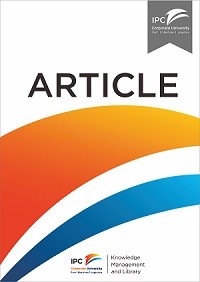Article
A Comparative Study of Assembly Planning in Traditional and Virtual Environments
This paper presents an experiment that investigated the potential benefits of virtual reality (VR) environments in supporting assembly planning. In the experiment, fifteen subjects performed an assembly planning task in three different conditions: a traditional engineering environment (TE), a nonimmersive desktop VR (DVR) environment, and an immersive care automatic virtual environment (CAVE) VR environment (CVR environment). The effects of the three conditions on the subjects’ performance were analyzed. The subjects’ performance time in the TE condition was significantly longer than that in the DVR condition and that in the CVR condition, whereas the difference in performance time between the DVR condition and the CVR condition was not significant. The total number of problematic assembly steps in the TE condition was significantly greater than that in the CVR condition. Specifically, the subjects’ assembly sequences in the TE condition involved more reorientations than in the DVR condition. The number of difficult assembly steps in the TE condition was significantly greater than that in the DVR condition, which was significantly greater than that in the CVR condition. The number of dissimilar assembly steps in the TE condition was significantly greater than that in the CVR condition, which was significantly greater than that in the DVR condition. Hence, the results revealed advantages of the two VR environments over the traditional engineering environment in improving the subjects’ overall assembly planning performance and in minimizing the handling difficulty, excessive reorientation, and dissimilarity of assembly operations.
Ketersediaan
Informasi Detail
- Judul Seri
-
A Comparative Study of Assembly Planning in Traditional and Virtual Environments
- No. Panggil
-
ATC LO NON a
- Penerbit
- : Fred Dech., 1999
- Deskripsi Fisik
-
11p
- Bahasa
-
English
- ISBN/ISSN
-
-
- Klasifikasi
-
LO
- Tipe Isi
-
-
- Tipe Media
-
-
- Tipe Pembawa
-
online resource
- Edisi
-
VOL. 29, NO. 4, NOVEMBER 1999
- Subjek
- Info Detail Spesifik
-
-
- Pernyataan Tanggungjawab
-
Nong Ye
Versi lain/terkait
| Judul | Edisi | Bahasa |
|---|---|---|
| Developmental networks at work : holding environments for leader development | Vol. 18 No. 3, 2013 pp. 232-256 | en |
| Analytical modeling of third party service provider selection in lead logistics provider environments | Vol. 5 No. 3, 2010 | en |
Lampiran Berkas
Komentar
Anda harus masuk sebelum memberikan komentar

 Karya Umum
Karya Umum  Filsafat
Filsafat  Agama
Agama  Ilmu-ilmu Sosial
Ilmu-ilmu Sosial  Bahasa
Bahasa  Ilmu-ilmu Murni
Ilmu-ilmu Murni  Ilmu-ilmu Terapan
Ilmu-ilmu Terapan  Kesenian, Hiburan, dan Olahraga
Kesenian, Hiburan, dan Olahraga  Kesusastraan
Kesusastraan  Geografi dan Sejarah
Geografi dan Sejarah